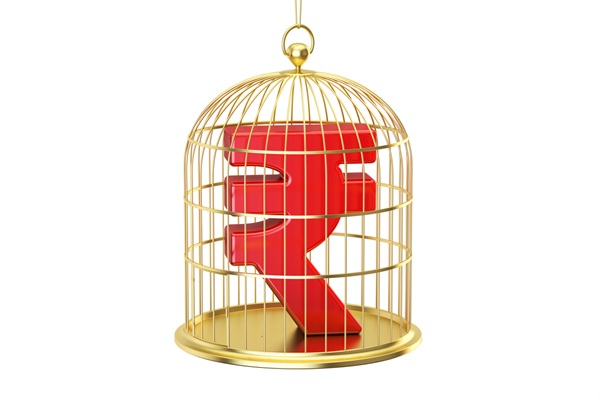.png)

Chandrika Soyantar is Founding Partner at Amarisa Capital. An investment banker with over three decades experience, she has managed the entire range of investment banking services
November 24, 2025 at 12:11 PM IST
Warrants originated in India’s manufacturing sector in the late 1980s, attached to convertible debentures to ease debt capital raising in a shallow public debt market. They enabled companies to raise funds upfront while postponing equity dilution and gave investors valuable optionality — the right to convert when market conditions improved.
Through the 1990s, this innovation saw both use and abuse. Promoters often issued warrants to themselves at undervalued prices, consolidating control without paying fully upfront.
In the regulatory clean-up, the Companies Act, 2013, eliminated bearer-style warrants and mandated transparency. SEBI later refined them — 25% upfront payment, 18-month conversion window, and forfeiture if conversion was incomplete — transformed warrants into disciplined, rule-based instruments. These reforms restored credibility and repositioned warrants as transparent financial instrument.
Re-Emergence
Recognising its potential Indian banks have harnessed warrants intelligently. Warrants allow banks to raise capital efficiently, equity issuance to be sequenced, and regulatory ratios to be maintained — especially under shareholding ownership and foreign ownership caps. The time lag between issue and conversion becomes a valuable buffer now for aligning regulatory approvals and capital availability timed with growth.
The Axis Bank–Bain Capital transaction in 2017 became the defining precedent. Axis raised about $1.4 billion through a combination of equity and warrants to marquee investors including Bain Capital. Bain converted them in 2019 and fully exited by April 2024 with substantial gains. The deal trajectory demonstrated how warrants could attract long-term institutional capital without immediate dilution — setting a new model for private banks.
What marked the first instance of a foreign non-banking entity taking a majority stake in an Indian private bank Catholic Syrian Bank in 2018 raised $60 million that included warrants to Fairfax entities to strengthen its capital base
IndusInd Bank in 2019 used warrants worth ₹26.95 billion or $325 million to its promoters reinforcing promoter alignment and continuity.
YES Bank in 2022 raised about $1.1 billion from Carlyle Group and Advent International, combining equity and convertible warrants, each firm acquiring up to a 10% stake. The infusion strengthened its balance sheet and retail expansion — marking one of the largest private capital raises in Indian banking.
Now in 2025, Federal Bank has drawn attention as the fifth Indian private bank to issue warrants, following Axis, Catholic Syrian, IndusInd, and Yes Bank. Federal Bank is neither the first to attract a global investor nor its fund raise of $705 million the largest. However, what stands apart is its exclusive use of share warrants, rather than a mix of equity and warrants — signalling a deliberate, standalone use of warrants as capital raising strategy.
Under SEBI’s 25% upfront and 18-month conversion rule, Federal Bank’s planned issue to Blackstone secures committed capital today while preserving flexibility in equity deployment. The structure allows strategic participation by global investors in future growth while aligning with regulatory and operational priorities — signalling confidence, not crisis.
Warrants as FDI Catalyst
In contrast, the United States used warrants as instruments of stabilisation and rescue during the 2008 Global Financial Crisis. Under the US Treasury’s Capital Purchase Program, the largest program of Troubled Asset Relief Program, major banks — JPMorgan, Citigroup, Bank of America, and Wells Fargo — issued preferred shares and warrants to the US Treasury in exchange for emergency capital.
Later the Treasury sold these warrants through auctions, earning US$936 million from JPMorgan, US$350 million from Citigroup, and over US$1 billion from Bank of America. The government not only recouped its entire outlay but exited with profits — a rare instance where taxpayers earned returns from a rescue.
Private capital also played a key role. For instance, Warren Buffett’s Berkshire Hathaway invested $5 billion in Goldman Sachs, combining preferred stock with warrants to buy shares at a fixed price. Goldman later redeemed the preferred stock with a $500 million premium, and when Berkshire exercised its warrants, total returns exceeded $3 billion — proof that crisis-time capital could both stabilise markets and reward discipline.
Crisis vs. Confidence
In the US, warrants symbolised crisis containment and confidence restoration — temporary bridges from panic to stability. In India, the story is the opposite: warrants are proactive instruments of strategic readiness, not emergency rescue. SEBI’s framework enforces discipline, while the timing flexibility allows banks to sequence capital raises with growth cycles.
Both Axis and Federal Bank share a common feature — aligning public and private capital toward financial stability. But where the US used warrants to rebuild what was broken, India uses them to build what’s next.
From sweetener to strategic capital instrument, the warrant now exemplifies financial innovation under regulatory discipline. It enables banks to raise capital intelligently, manage ownership caps, and signal conviction — while offering investors structured access to future growth.
US warrants repaired and restored confidence; Indian warrants reaffirm and reinforce strategic intent.




